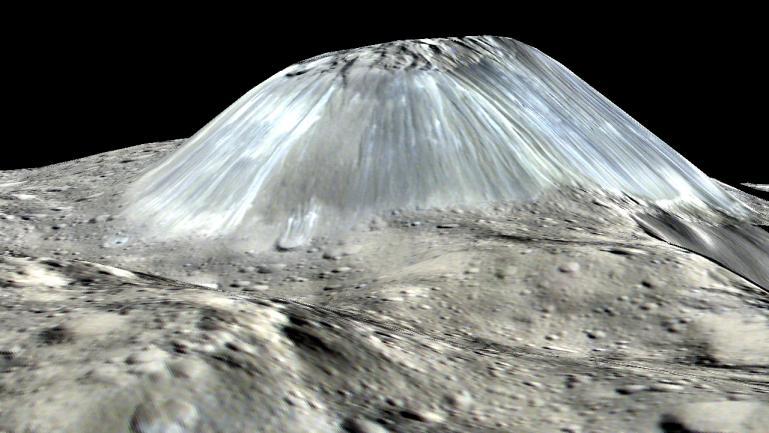News | June 11, 2019
Scientists Solve Mystery of Ceres' Lonely Mountain

Ceres' lonely mountain, Ahuna Mons, is seen in this simulated perspective view based on data from NASA's Dawn spacecraft. Credit: NASA/JPL-Caltech/UCLA/MPS/DLR/IDA | Full image and caption ›
A study involving scientists from the European Space Agency (ESA), the German Aerospace Center (DLR), NASA's Jet Propulsion Laboratory and Sapienza Università di Roma, Rome, Italy has now solved the mystery of how Ceres’ gigantic volcanic dome, Ahuna Mons, was formed. Using gravity measurements obtained by NASA's Dawn mission, the authors showed that an ascending plume made of a mixture of salty water and rock rose from within the dwarf planet. Once that material erupted onto the surface, it formed a mountain 2.5 miles (4 kilometers) high and 10.5 miles (17 kilometers) wide. While this process occurred at very cold temperatures on Ceres, probably below 32 degrees Fahrenheit (0 degrees Celsius), it is similar to plumes of magma forming volcanoes on Earth.


